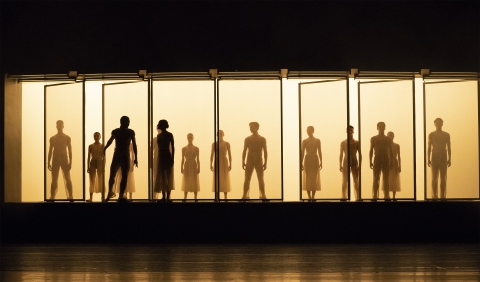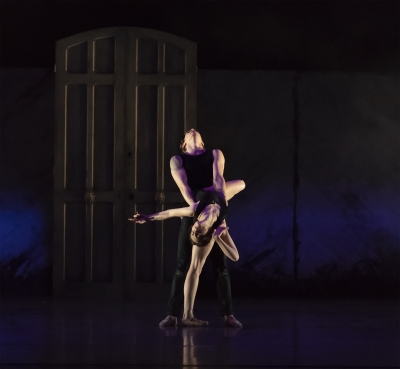Birmingham Hippodrome
June 20, 2018
David Mead
While admitting programmes such as Birmingham Royal Ballet’s Polarity and Proximity are a hard sell, at a pre-performance reception, company artistic director David Bintley spoke passionately about how, while the classics and history are important and must never be forgotten, it was essential that companies present work of today.
So, to Ballet Now, the project that will see BRB present ten new ballets over the next five years, all by choreographers who have taken a classical route but have not had opportunities to work on the largest scale, the first of which, George Williamson’s Embrace, formed the middle part of this latest triple bill.
Undoubtedly Williamson’s most interesting work to date, its loose narrative depicts a man coming to terms with himself and his sexuality. While Williamson insists it is not autobiographical, the ballet is intensely personal.
Brandon Lawrence is outstanding as the man, at first very much part of society in that he wears the same clothes as the corps, but apart in almost every other way. His sense of frustration of not understanding, is evident. They ignore him as he moves among their shifting groups, before he finds a connection with Delia Mathews, and then a deeper attachment with Max Maslen.

Photo Emma Kauldhar
There is much of interest in the episodic action. There is a powerful all-male section but it is two duets that are at the centre of things. In that for Lawrence and Mathews, the man and woman are on much more equal terms than is usual in a ballet pas de deux, she supporting and leading him on occasion. But it is that for Lawrence and Maslen that is the absolute heart of the ballet in all ways, it’s a male duet that is slow, tender, intimate and very deeply felt. I just feel both relationships could have been explored more, perhaps at the expense of some of the ensemble sections, which don’t really say much once the initial point has been made.
Sarah Kirkland Snider’s new and undoubtedly American score with its echoes of Bernstein, Copeland and Barber supports the action well. At a time when it seems de rigueur that new music has to be difficult, Snider manages to be challenging without being hard on the ear. The way Madeleine Girling’s top layer of thin white tops and trousers are removed to reveal orangey-red costumes underneath effectively suggests the revealing of true identity.
Embrace is a good start to what promises to be a stimulating run of new works.

Photo Emma Kauldhar
For a really top-notch, exciting, modern ballet, look no further than Alexander Whitley’s Kin. that opened the evening, though. That full stop in the title is important, by the way, it being an abbreviation for kinetic, while also looking at notions of kinship.
Right from the first image of silhouetted figures against a white marbled backdrop, and Jenna Roberts’ solo, Kin is fresh and quite mesmerising. That solo was made for Roberts. Largely floor-based, her long legs unfold and reach into space. The structurally complex dances that follow bring together the classical and contemporary echo as they Phil Kline’s slightly melancholic yet simultaneously rhythmic, quite minimalist score. A central modern pas de deux by Roberts and Tyrone Singleton flows with odd accented moments. They, and the whole company, all dressed in sleek black, were terrific.
As far as the Birmingham audience was concerned, the evening’s winner was Twyla Tharp’s driving In the Upper Room. And why not. The iconic dance and Philip Glass’ score are full of energy and absolutely infectious.

Photo Emma Kauldhar
The opening dances for those in sneakers lacked the some of the required looseness but it got much better as the ballet went on. Some of the lifts looked more difficult than they should too. But still you can’t take your eyes off it for a second. Dancers come wave after wave. They duck and bob and weave. They jog. Backwards! And then there’s the razor sharp pointework, the red pointe shoes somehow adding to the precision, especially from and Momoko Hirata. Among the men, the tall Yasuo Atsuji and Tzu-Chao Chou stood out for their dash and style.
A very mixed programme indeed, but also the most interesting mixed bill BRB have put on in years.
Polarity and Proximity continues at the Birmingham Hippodrome to June 23. Visit www.birminghamhippodrome.com or call the box office on 0844 338 5000 for tickets.

